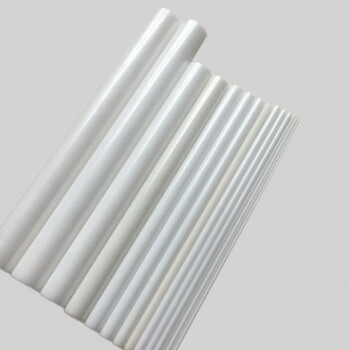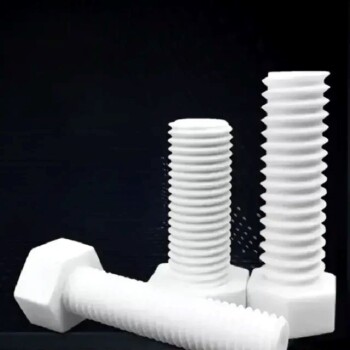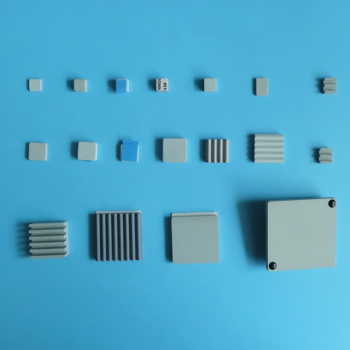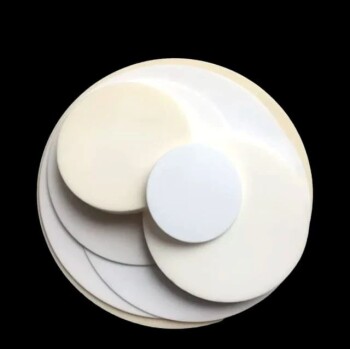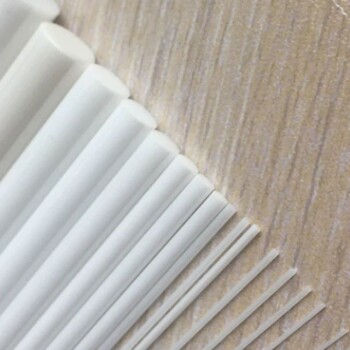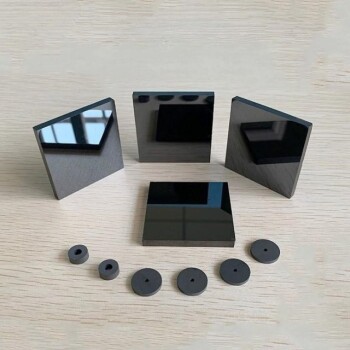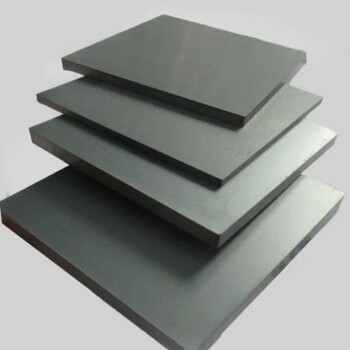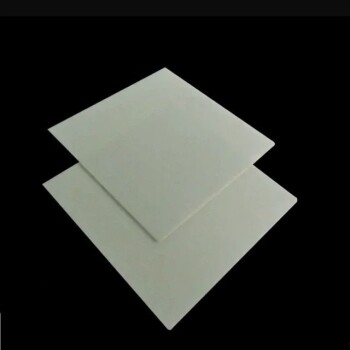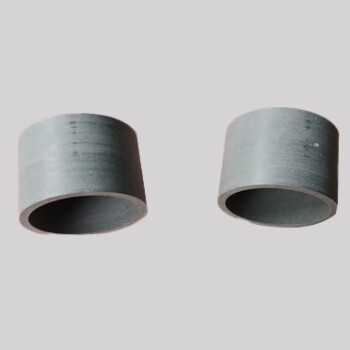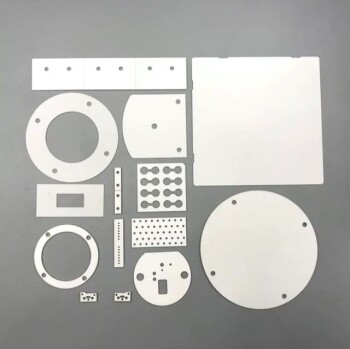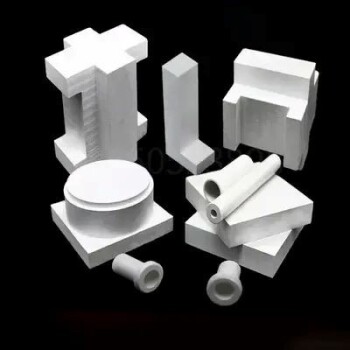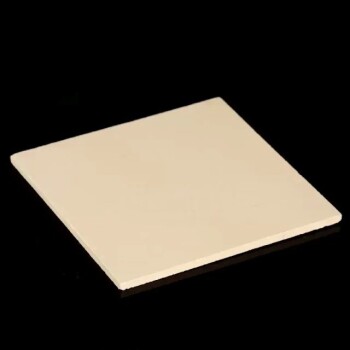Aerospace Applications
Ceramic Matrix Composites for Spacecraft Shells
Ceramic Matrix Composites (CMCs) have revolutionized the aerospace industry, particularly in the construction of spacecraft shells and rocket nozzles (thrust chambers). These advanced materials are typically composed of ceramic fibers such as carbon fiber or silicon carbide embedded in a ceramic matrix. This unique combination offers superior properties that are crucial for the harsh environments encountered in space missions.
One of the key advantages of CMCs is their exceptional thermal resistance. Unlike traditional metals, which can melt or degrade under the extreme temperatures experienced during atmospheric re-entry or rocket propulsion, CMCs maintain their structural integrity. This is due to the ceramic fibers' ability to withstand high temperatures without significant deformation or loss of strength.
Moreover, CMCs are significantly lighter than their metallic counterparts. The reduced weight translates to lower fuel consumption and increased payload capacity, which are critical factors in space exploration. For instance, the use of CMCs in rocket nozzles allows for more efficient propulsion, leading to higher thrust and better performance.
In addition to their thermal and weight advantages, CMCs exhibit excellent resistance to corrosion and oxidation. This durability is essential for the long-term reliability of spacecraft components, ensuring that they perform consistently throughout their operational lifespan.
The versatility of CMCs is also noteworthy. They can be tailored to meet specific requirements by varying the type and arrangement of the reinforcing fibers and the matrix material. This customization capability makes CMCs an ideal choice for a wide range of aerospace applications, from spacecraft heat shields to rocket engine components.
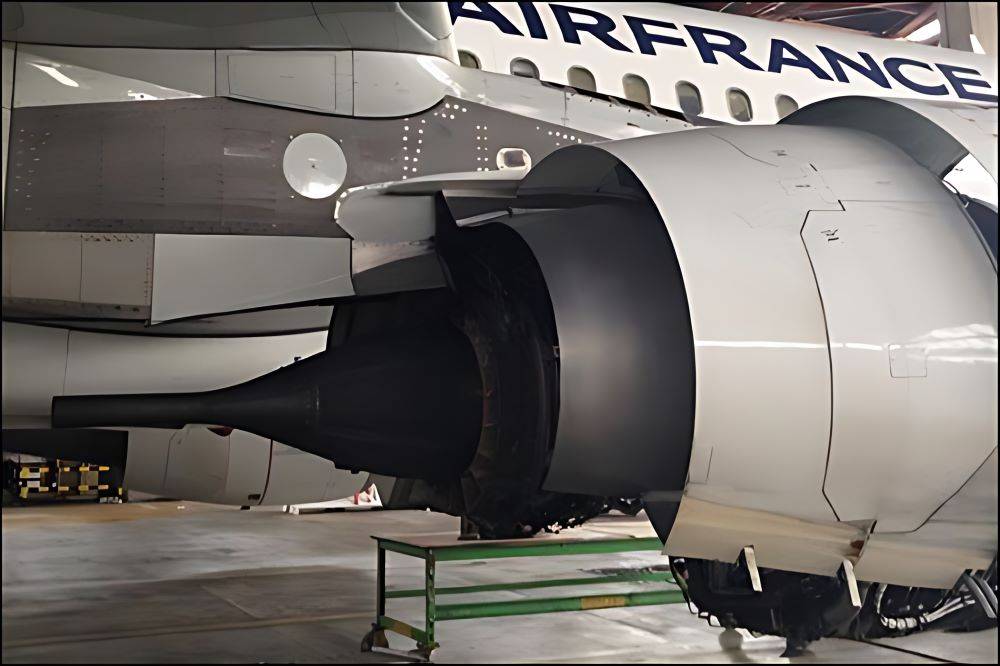
In summary, Ceramic Matrix Composites have become indispensable in the aerospace sector due to their unique combination of thermal resistance, lightweight properties, durability, and versatility. As space exploration continues to advance, the role of CMCs is expected to expand, further pushing the boundaries of what is possible in aerospace engineering.
Ultra-High Temperature Ceramic Coatings
Ultra-high temperature ceramic (UHTC) coatings, such as those composed of HfB₂, ZrB₂, and ZrC, play a pivotal role in enhancing the surface durability of high-speed aircraft. These materials are indispensable due to their exceptional ability to withstand extreme temperatures and resist ablation and erosion. The necessity of such coatings becomes evident when considering the operational conditions of high-speed aircraft, which can experience temperatures exceeding 2000°C in mere moments as they approach speeds of Mach 10.
| Material | Melting Point (°C) | Applications |
|---|---|---|
| HfB₂ | >3000 | Aircraft coatings |
| ZrB₂ | >3000 | Aircraft coatings |
| ZrC | >3000 | Aircraft coatings |
The high melting points of these UHTCs, often surpassing 3000°C, are attributed to their strong covalent bonds and low self-diffusion rates. However, these properties also contribute to a significant challenge: low fracture toughness during the sintering process. To mitigate this issue, manufacturers often incorporate toughening agents, such as particles or fibers, into the ceramic matrix. This approach not only enhances the material's toughness but also facilitates densification through methods like Spark Plasma Sintering (SPS), which allows for sintering at relatively lower temperatures.
In summary, UHTC coatings are critical for ensuring the structural integrity and operational longevity of high-speed aircraft, particularly in environments where conventional materials would rapidly degrade. Their unique combination of high-temperature resistance and ablation-scour resistance makes them an irreplaceable component in modern aerospace engineering.
High Temperature Wave-Transparent Materials
Silicon nitride, boron nitride, and other nitride ceramics have emerged as pivotal materials in the aerospace sector due to their exceptional properties. These materials exhibit high temperature resistance, low dielectric constant and dielectric loss, creep resistance, and superior oxidation resistance. These attributes make them ideal for use as a new generation of wave-transparent materials, crucial for applications where both thermal stability and electromagnetic transparency are essential.
In the aerospace industry, the need for materials that can withstand extreme temperatures while maintaining their structural integrity and electromagnetic properties is paramount. Silicon nitride and boron nitride ceramics meet these stringent requirements, making them indispensable in the design and construction of advanced spacecraft components. Their ability to resist thermal degradation and maintain low dielectric properties ensures that they can function effectively in high-stress environments, such as those encountered during re-entry or in the harsh conditions of space.
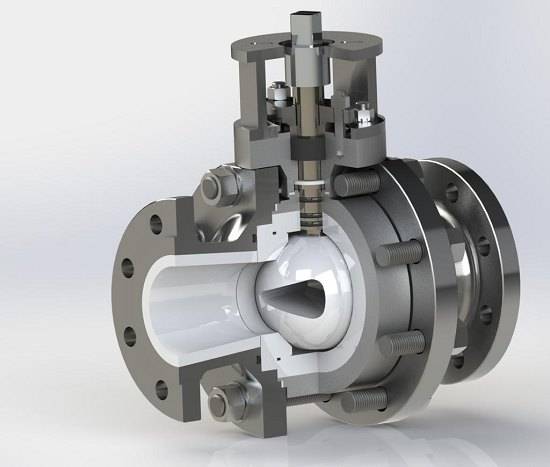
Moreover, these materials' creep resistance and oxidation resistance further enhance their durability and reliability. Creep resistance is particularly important in high-temperature applications, where materials can deform over time under constant stress. Oxidation resistance ensures that these ceramics can maintain their structural and functional properties even in the presence of oxidative environments, which is critical for their longevity in aerospace applications.
The integration of silicon nitride and boron nitride ceramics into wave-transparent materials represents a significant advancement in aerospace engineering. These materials not only meet the demanding physical and chemical requirements of aerospace applications but also contribute to the overall performance and safety of spacecraft and related systems. As the aerospace industry continues to push the boundaries of technology and exploration, the development and utilization of these high-temperature wave-transparent materials will play an increasingly vital role.
Electronic Information Applications
Ceramic Circuit Boards
Engineering ceramics, such as aluminum nitride, alumina, and sapphire substrates, are pivotal in advancing electronic information technology. These materials are increasingly utilized in highly integrated circuit boards due to their superior thermal conductivity, dielectric properties, and mechanical stability. The integration of these ceramics into circuit boards enables higher performance and reliability in electronic devices, particularly in applications requiring high power and high-density integration.
In the realm of electronic information, the role of ceramic circuit boards cannot be overstated. They serve as the backbone for modern electronic systems, supporting the miniaturization and efficiency of components. For instance, aluminum nitride substrates are favored for their excellent thermal management capabilities, which are crucial in dissipating heat from high-power electronics. Alumina, known for its high dielectric strength and low dielectric loss, is ideal for high-frequency applications. Sapphire substrates, with their exceptional optical transparency and mechanical hardness, are essential in optoelectronic devices.
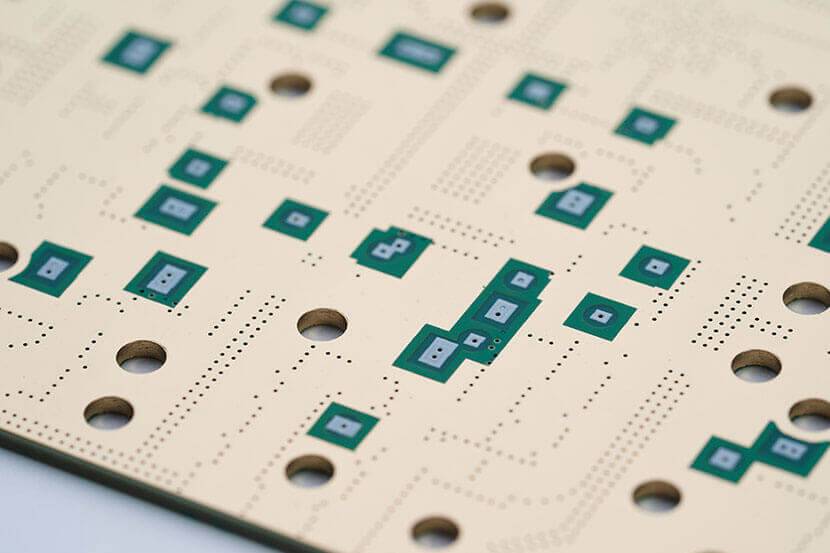
The adoption of these ceramic materials in circuit boards is not merely a trend but a necessity driven by the demands of modern electronics. As electronic systems become more complex and compact, the need for materials that can withstand high temperatures, resist electrical breakdown, and maintain dimensional stability under stress becomes paramount. Ceramic circuit boards meet these criteria, making them indispensable in the ongoing technological revolution in electronic information.
Wide-Band Semiconductor Materials
The advent of wide-band semiconductor materials, such as silicon carbide, has heralded a new era in electronic performance. These materials possess unique properties that enable them to significantly enhance the capabilities of traditional silicon-based integrated circuits. Silicon carbide, for instance, exhibits superior thermal conductivity, higher breakdown voltage, and faster switching speeds compared to conventional silicon. These attributes are crucial for the development of high-power and high-density integrated circuits, which are indispensable in modern electronic devices and systems.
In the realm of electronic information, the integration of silicon carbide into semiconductor devices allows for more efficient power management and higher operational frequencies. This is particularly vital in applications such as electric vehicles, renewable energy systems, and advanced communication networks. The ability of silicon carbide to operate efficiently under high temperatures and high voltages makes it an ideal candidate for these demanding environments.
Moreover, the development of wide-band semiconductor materials is not limited to silicon carbide. Other materials, such as gallium nitride (GaN), are also being explored for their potential to further push the boundaries of semiconductor technology. These materials are being integrated into next-generation chips that promise to deliver unprecedented levels of performance and efficiency, driving innovation across various industries.
The significance of these materials is underscored by their role in enabling the miniaturization and power optimization of electronic components. As the demand for smaller, more powerful, and more energy-efficient devices continues to grow, the continued advancement and adoption of wide-band semiconductor materials will be critical to meeting these challenges.
Optical Brazing and Connectors
Optical fibers, the backbone of modern network information transmission, are meticulously crafted from high-purity quartz glass fibers. These fibers are renowned for their exceptional transparency and low signal loss, making them indispensable in high-speed data networks. Complementing these fibers are their connectors, which are manufactured from zirconia ceramics. Zirconia, known for its superior mechanical strength and thermal stability, ensures that the connectors can withstand the rigors of installation and operation without compromising the integrity of the optical signal.
The synergy between high-purity quartz glass fibers and zirconia ceramic connectors is pivotal in maintaining the efficiency and reliability of optical networks. This combination not only facilitates seamless data transmission over long distances but also ensures that the connections remain secure and robust, even in demanding environmental conditions. The precision engineering involved in both fiber and connector production underscores the critical role of engineering ceramics in advancing the field of electronic information.
Laser Light-Emitting Crystals
Solid-state laser light-emitting crystals are pivotal in the field of electronic information, particularly in the development of high-performance laser systems. These crystals serve as the core material for solid-state lasers, which are renowned for their efficiency, reliability, and compact size. The primary materials used in this context are ruby (Al₂O₃:Cr³⁺) and yttrium aluminum garnet (YAG, Y₃Al₅O₁₂:Nd³⁺).
Ruby lasers, which utilize chromium-doped aluminum oxide, are known for their high output power and are commonly employed in scientific research and medical applications. On the other hand, YAG lasers, particularly those doped with neodymium, offer superior thermal conductivity and are widely used in industrial applications such as cutting and welding.
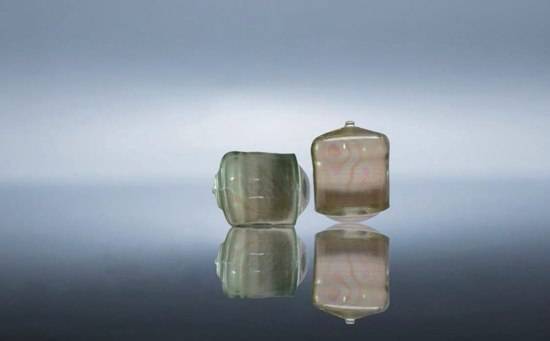
| Crystal Type | Primary Application | Key Characteristics |
|---|---|---|
| Ruby (Al₂O₃:Cr³⁺) | Scientific research, medical | High output power |
| YAG (Y₃Al₅O₁₂:Nd³⁺) | Industrial cutting, welding | Superior thermal conductivity |
The choice between ruby and YAG crystals often depends on the specific requirements of the application, including the desired wavelength, output power, and thermal management. Both materials continue to be at the forefront of laser technology, driving advancements in various sectors such as telecommunications, manufacturing, and healthcare.
Piezoelectric Ceramics in Cameras
Piezoelectric ceramics play a pivotal role in the autofocus system of cameras, enabling precise and rapid adjustments to maintain sharp images. These ceramics generate electrical charges in response to applied mechanical stress, a property known as the piezoelectric effect. This characteristic is harnessed to move camera lenses with high accuracy, ensuring that the focus is adjusted instantaneously as the scene changes.
The integration of piezoelectric ceramics into camera autofocus systems has revolutionized photography, particularly in modern digital cameras and smartphones. Unlike traditional autofocus methods that rely on electromagnetic motors, piezoelectric actuators offer several advantages. They are faster, quieter, and more energy-efficient, making them ideal for the compact and high-performance demands of contemporary imaging devices.
Moreover, the precision of piezoelectric ceramics allows for more sophisticated autofocus algorithms. Advanced cameras can now employ phase detection autofocus (PDAF) and contrast detection autofocus (CDAF) simultaneously, enhancing the speed and accuracy of focus tracking. This dual-system approach is particularly beneficial in dynamic shooting scenarios, such as capturing fast-moving subjects or in low-light conditions.
In summary, piezoelectric ceramics are not just essential to the autofocus system of a camera; they are integral to the evolution of imaging technology, enabling advancements that enhance the quality and responsiveness of modern photography.
Electronic Product Shell Materials
The shells of modern smart phones and watches are increasingly adopting zirconia ceramics due to their superior properties. Zirconia ceramics offer a smooth, polished surface that enhances the aesthetic appeal of these devices. Beyond their visual attractiveness, these materials exhibit excellent wear resistance, ensuring that the devices remain scratch-free and retain their pristine appearance over extended periods of use.
In addition to their aesthetic and durability benefits, zirconia ceramics are also known for their biocompatibility and hypoallergenic properties. This makes them particularly suitable for wearable devices that come into direct contact with the skin, reducing the risk of allergic reactions or skin irritation. The integration of zirconia ceramics into electronic product shells not only elevates the user experience but also contributes to the overall longevity and reliability of the devices.
New Energy Applications
Lithium Battery Materials
Engineering ceramics play a pivotal role in the development of lithium-ion batteries, which are integral to new energy applications. The positive electrode materials in these batteries, such as LiCoO₂, LiMnO₂, Li(Co, Ni, Mn)O₂, and LiFePO₄, are primarily composed of ceramic materials. These ceramics offer high stability, excellent conductivity, and a long cycle life, making them ideal for energy storage systems.
Moreover, the negative electrode materials, traditionally carbon-based, are increasingly being replaced by ceramic materials. This shift is driven by the need for improved performance and longevity in battery technology. Ceramic materials, such as silicon carbide and titanium dioxide, are being explored for their potential to enhance battery capacity and efficiency. This trend underscores the broader application of engineering ceramics in advancing new energy technologies.
High Temperature Fuel Cell Diaphragms
Zirconia ceramic stands as the cornerstone material for high temperature fuel cell diaphragms, a critical component in the realm of new energy applications. This ceramic material is renowned for its exceptional thermal stability and chemical inertness, which are paramount for maintaining the integrity and efficiency of fuel cells operating at elevated temperatures.
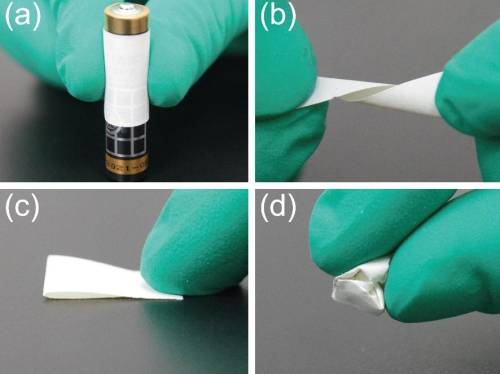
Zirconia's unique properties, such as its high melting point and resistance to thermal shock, make it an ideal candidate for fuel cell diaphragms. These characteristics ensure that the diaphragm remains stable and functional even under extreme conditions, which is essential for the continuous and efficient conversion of chemical energy into electrical energy.
Moreover, zirconia ceramic's ability to withstand harsh environments without degradation further underscores its suitability for this application. This durability is crucial in ensuring the longevity and reliability of high temperature fuel cells, which are pivotal in advancing clean energy technologies.
In summary, zirconia ceramic's superior thermal and chemical properties render it indispensable for the fabrication of high temperature fuel cell diaphragms, playing a pivotal role in the development and deployment of sustainable energy solutions.
Solar Thermal Power Generation Materials
In the realm of new energy applications, silicon carbide ceramics stand out as pivotal materials for solar thermal power generation. These ceramics are integral to the collector systems, where they excel in both light absorption and heat conduction. Silicon carbide's unique properties, such as high thermal conductivity and excellent resistance to thermal shock, make it an ideal choice for this critical function.
The efficiency of solar thermal power systems heavily relies on the ability of the collector materials to convert sunlight into heat. Silicon carbide ceramics not only absorb sunlight effectively but also transfer the absorbed heat rapidly, minimizing energy losses. This dual capability ensures that the solar energy is efficiently harnessed and converted into usable power.
Moreover, silicon carbide's durability and resistance to high temperatures further enhance its suitability for solar thermal applications. Unlike other materials that may degrade under prolonged exposure to intense sunlight and high temperatures, silicon carbide maintains its structural integrity and performance, making it a sustainable choice for long-term use in solar thermal power plants.
In summary, silicon carbide ceramics are not just materials; they are enablers of efficient and sustainable solar thermal power generation, contributing significantly to the advancement of renewable energy technologies.
Nuclear Power Generation Materials
In the realm of nuclear power generation, the selection of materials is crucial for ensuring the safety and efficiency of reactors. One of the key components in this domain is the neutron absorber, which plays a pivotal role in controlling the nuclear reaction within the reactor. The primary material used for this purpose is boron carbide (B4C), a ceramic known for its exceptional neutron absorption capabilities.
Boron carbide is preferred due to its high neutron absorption cross-section, which allows it to effectively moderate neutron flux within the reactor core. This property is essential for maintaining a stable and controlled nuclear chain reaction, thereby ensuring the safe operation of nuclear power plants.
In addition to boron carbide, other boron-containing ceramics are also utilized in nuclear reactors. These materials are often incorporated into control rods, which are designed to absorb excess neutrons and regulate the rate of nuclear fission. The use of these ceramics ensures that the reactor operates within safe parameters, preventing potential hazards such as overheating or meltdown.
The robustness of boron carbide and other boron-containing ceramics makes them ideal for the harsh environments found in nuclear reactors. They exhibit excellent thermal stability, resistance to radiation damage, and low neutron activation, further enhancing their suitability for use in nuclear power generation.
Moreover, advancements in ceramic technology have led to the development of new boron-based materials with enhanced properties. These innovations are continuously being explored to improve the performance and safety of nuclear reactors, paving the way for more efficient and sustainable nuclear power generation in the future.
Tritium-Resistant Coatings
In the realm of nuclear fusion reactors, the durability and resistance of materials to tritium are paramount. Tritium, a radioactive isotope of hydrogen, poses significant challenges due to its ability to permeate and degrade conventional materials over time. To address this issue, carbide coatings and nitride and carbide composite coatings have emerged as critical solutions. These coatings are meticulously engineered to withstand the harsh conditions within fusion reactors, where tritium exposure is a constant concern.
Carbide coatings, such as those composed of silicon carbide or boron carbide, exhibit exceptional resistance to tritium diffusion. Their dense molecular structure effectively blocks tritium particles, preventing them from penetrating the underlying material. Similarly, nitride coatings, like silicon nitride, offer a robust barrier against tritium, leveraging their chemical stability and high melting points.
The integration of composite coatings, which combine carbides and nitrides, further enhances tritium resistance. These composites benefit from the synergistic properties of their constituent materials, providing a multi-layered defense against tritium ingress. The result is a coating that not only withstands the physical stresses of a fusion environment but also maintains its integrity in the presence of tritium, ensuring the longevity and safety of the reactor components.
Wind Power Generation Materials
In the realm of wind power generation, the materials utilized are pivotal to ensuring both efficiency and longevity. One of the critical components in this sector is the motor bearing, which is subjected to extreme conditions such as high rotational speeds and varying environmental factors. To address these challenges, silicon nitride ceramic bearings have emerged as the preferred choice. These bearings are renowned for their high reliability and maintenance-free operation, making them ideal for the demanding environment of wind turbines.

Silicon nitride ceramic bearings offer several advantages over traditional metallic bearings. They exhibit superior hardness and wear resistance, which translates to extended service life and reduced downtime for maintenance. Additionally, their low density helps in minimizing the overall weight of the turbine, thereby enhancing its efficiency. The thermal stability of silicon nitride ceramics ensures that these bearings can operate effectively even under fluctuating temperature conditions, which is a common occurrence in wind power generation.
Moreover, the chemical inertness of silicon nitride ceramics renders these bearings resistant to corrosion, a critical factor given the exposure to moisture and other environmental elements. This inherent property not only enhances the durability of the bearings but also reduces the need for frequent replacements, thereby lowering operational costs.
In summary, the adoption of silicon nitride ceramic bearings in wind power generation is a testament to the innovative use of engineering ceramics in new energy applications. Their unique properties make them indispensable for ensuring the reliability and efficiency of wind turbines, contributing significantly to the sustainability of renewable energy sources.
Ultraviolet Semiconductor Lasers
Boron nitride crystals, when doped with appropriate elements, exhibit ultraviolet luminescence, making them ideal for the fabrication of ultraviolet semiconductor lasers. These lasers, operating in the ultraviolet spectrum, have significant applications in various fields, including medical diagnostics, spectroscopy, and optical data storage. The unique properties of boron nitride, such as its high thermal conductivity and chemical stability, contribute to the efficiency and durability of these lasers.
In addition to their use in lasers, silicon-based boron nitride films, which possess a photoelectric effect, are also being explored for their potential in photovoltaic cells. These films can convert light energy into electrical energy, offering a promising avenue for developing next-generation solar cells. The combination of boron nitride's optical properties and silicon's semiconductor capabilities creates a synergistic effect that enhances the overall performance of photovoltaic devices.
| Property | Boron Nitride | Silicon-Based Boron Nitride Film |
|---|---|---|
| Luminescence | Ultraviolet | Photovoltaic Effect |
| Applications | Ultraviolet Semiconductor Lasers | Photovoltaic Cells |
| Key Advantages | High Thermal Conductivity, Chemical Stability | Enhanced Photovoltaic Performance |
The development of boron nitride-based materials for both ultraviolet lasers and photovoltaic cells underscores the versatility and potential of engineering ceramics in advancing technology across multiple sectors.
Energy Conservation and Environmental Protection Applications
High Porosity Ceramic Materials for Thermal Insulation
High porosity ceramic materials, characterized by their lightweight and high closed-end porosity, have emerged as pivotal in thermal insulation applications across various industries. Materials such as alumina hollow balls, foam ceramic products, and high-temperature alumina fibers or mullite polycrystalline cotton are exemplary in this category. These materials are engineered to maintain their insulating properties even under extreme conditions, making them ideal for environments where temperatures can soar between 1000 to 1700 ℃.
In practical applications, these ceramics not only provide effective thermal insulation but also contribute significantly to energy savings. Their ability to reduce heat transfer through conduction, convection, and radiation ensures that the internal environment remains stable, which is crucial in industries such as aerospace, where maintaining operational efficiency while minimizing energy consumption is paramount.
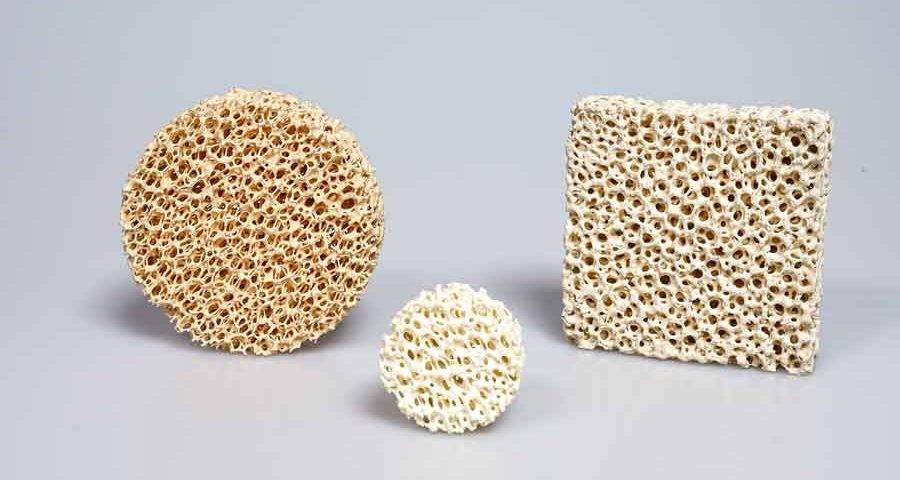
Moreover, the use of high porosity ceramic materials extends beyond mere insulation. They are integral in the design of components that require both structural integrity and thermal management, such as in the construction of spacecraft and high-temperature reactors. This dual functionality underscores their versatility and importance in modern engineering.
The energy-saving potential of these materials is further amplified by their durability and resistance to thermal degradation, which reduces the frequency of replacements and maintenance, thereby lowering long-term operational costs. As industries continue to seek sustainable solutions, high porosity ceramic materials stand out as a cornerstone in achieving both thermal efficiency and environmental sustainability.
High Open Porosity Ceramic Membranes for Flue Gas and Wastewater Treatment
High open porosity ceramic membranes have emerged as a pivotal technology for the separation of gas-solid mixtures in harsh environments, particularly in high-temperature flue gas and industrial dusty gas treatment. These membranes are engineered to facilitate efficient gas-solid separation, effectively capturing particles as small as 2.5 μm and even finer dust. The unique structural design of these ceramic membranes allows for high permeability while maintaining robust mechanical strength, making them ideal for applications where traditional filtration methods fall short.
One of the key advantages of these membranes is their ability to operate at elevated temperatures, which is crucial for flue gas treatment where temperatures often exceed 200°C. This temperature resistance not only enhances their durability but also ensures continuous operation without frequent maintenance. Additionally, the high open porosity structure enables rapid gas flow, reducing pressure drop and energy consumption during filtration processes.
Moreover, these ceramic membranes exhibit excellent recoil regeneration capabilities. When subjected to backflushing or other regeneration techniques, the membranes can easily shed accumulated particles, restoring their filtration efficiency. This self-cleaning property significantly extends the operational lifespan of the membranes, reducing the need for replacement and associated costs.
In wastewater treatment applications, high open porosity ceramic membranes similarly demonstrate superior performance. They can effectively filter out suspended solids, bacteria, and other contaminants, ensuring the production of clean effluent. The combination of high filtration precision and thermal stability makes these membranes a versatile solution for various environmental protection challenges.
Overall, high open porosity ceramic membranes represent a significant advancement in the field of environmental engineering, offering robust and efficient solutions for both flue gas and wastewater treatment. Their ability to operate under extreme conditions, coupled with their self-regenerative properties, positions them as a cornerstone technology for sustainable industrial practices.
Related Products
- Precision Machined Yttrium Stabilized Zirconia Ceramic Rod for Engineering Advanced Fine Ceramics
- High Quality Alumina Ceramic Screw for Engineering Advanced Fine Ceramics with High Temperature Resistance and Insulation
- Silicon Carbide (SIC) Ceramic Sheet Flat Corrugated Heat Sink for Engineering Advanced Fine Ceramics
- Engineering Advanced Fine Ceramics Aluminum Oxide Al2O3 Heat Sink for Insulation
- Engineering Advanced Fine Alumina Al2O3 Ceramic Rod Insulated for Industrial Applications
Related Articles
- Precautions for installing silicon carbide stick
- Comprehensive Overview of Zirconia Ceramic Materials
- Dos and don'ts during the installation of molybdenum disilicide (MoSi2) heating element
- Isostatic Pressing of Ceramics: Process and Precision
- Understanding the Process and Benefits of Zirconia Ceramic Cold Isostatic Pressing

